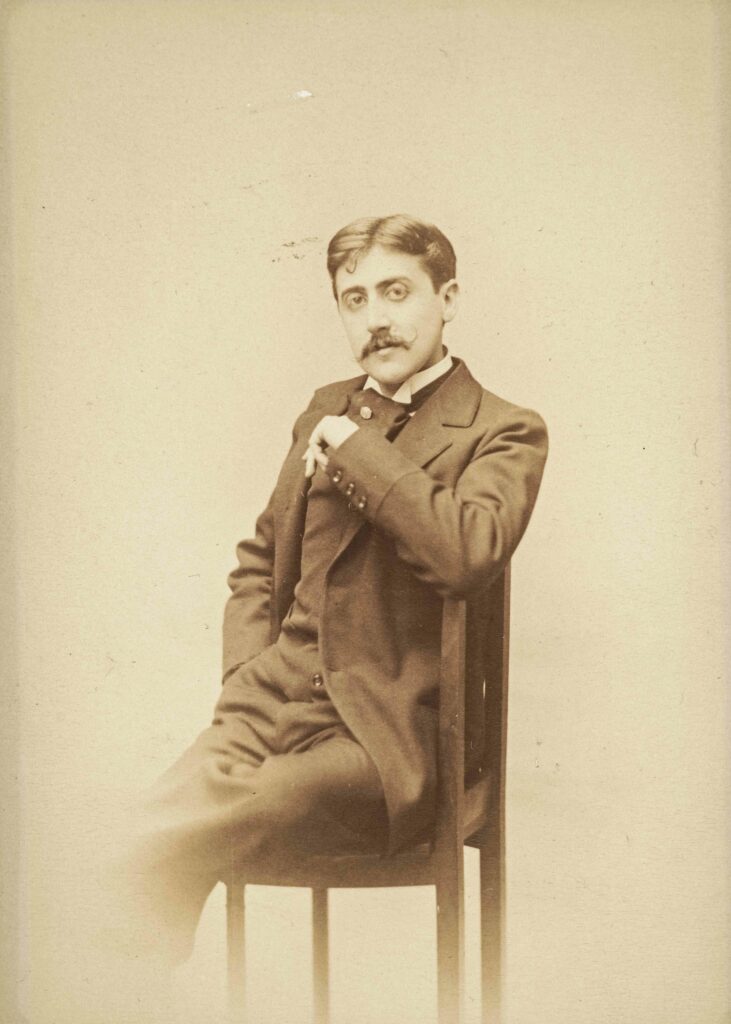Marcel in Paris

An interview with the Musée Carnavalet’s curator, Anne-Laure Sol, Curator of the exhibition “Marcel Proust, a Parisian novel”, Chief Curator of Heritage, department of paintings and stained glass at the Carnavalet Museum – History of Paris, who sheds insight on the exhibition Marcel Proust, a Parisian Novel, an exhibition that celebrates the 150th anniversary of his birth and explores his relationship to the city where he spent most of his life.
Beyond Marcel Proust as a writer, there is broader mythology. What do you think are the main characteristics of this Proustian myth?
The mythical dimension attached to Proust is, in my opinion, linked to the importance of his artwork entitled In Search of Lost Time (À la Recherche du temps perdu, in French), an immense reflection on time and art, and a break with the novelistic forms that preceded it. The conditions under which he wrote this novel – a decade during which the writer summoned up his memories to feed his work and consumed himself to complete it – are also quite extraordinary. The aura of this narrative cycle, which begins at the end of the Second Empire and ends in the 1920s, was very quickly understood by his contemporaries, and Proust was awarded the Prix Goncourt in 1919. Finally, all the stories related by Céleste Albaret, his governess, and by many of his relatives, contributed to constructing an almost legendary image of Proust – one based on a form of eccentricity and the acknowledgement of his literary genius

Marcel Proust and Robert de Montesquiou corresponded more than 300 times. The eccentric dandy even inspired the character of Baron de Charlus. What place does the figure of the dandy occupy in Marcel Proust’s work and imagination?
The Count de Montesquiou was one of the most remarkable figures of his time. By birth, he frequented the most exclusive salons; but his tastes and talents led him to the world of the arts. His extravagant personality served as a model for the dandy des Esseintes in Huysmans’s À Rebours (Against Nature). After their meeting in 1892 in Madeleine Lemaire’s salon, the two men bonded, forming a relationship in which Proust’s admiration for the young dandy was often mixed with mockery. Although Proust referred to Montesquiou, who was 24 years older than him, as his “professor of beauty” in his letters, he did not hesitate to use some of his features to forge the portrait of Baron de Charlus in his novel, which provoked the Count’s anger.

The portrait by Jacques-Émile Blanche shows Proust at the cutting edge of the refinement of his era. Could the writer himself be described as a dandy?
In this portrait dated 1892, Proust is 21 years old and is dressed in 1890s fashion. He is wearing a dark suit, a light-coloured waistcoat and shirt, as was common for going out in the evening, with an orchid in his buttonhole (a choice that can be explained by Proust’s aversion to flower pollen, as he suffered from asthma). In this portrait, he wears his hair short, slicked back and a thin moustache, and is indeed an elegant young man at the dawn of his social career. What is interesting is that there are no other portraits of Proust, and very few photographs after this painting. This painting therefore fixes an image of the artist as an eternal young man, a deliberate choice on his part. The testimony of Paul Morand, who met him in 1915, sheds light on the fact that Proust kept this way of dressing until his death, and that he therefore seemed curiously anachronistic to the elegant society of the early 20th century. The objects conserved by the Carnavalet Museum, the writer’s coat and cane, reinforce this impression. Proust had found his “style” very early on and never deviated from it.
What is the relationship between the author of In Search of Lost Time and fashion? Did it play a particular role in this unique literary masterpiece?
Marcel Proust has always been very interested in fashion; he even wrote a column in Le Mensuel in December 1890 signed “Etoile filante” (“Shooting star”) in which he wrote a series of fashion observations. This interest covers not only the field of clothing – from the crinolines of the late 1880s to the cylindrical hats worn by women during the World War I – but also interior furnishings, decoration, prominent personalities, and social codes (such as putting one’s hat on the ground, dining in the country in a jacket). For Proust, in the novel, fashion is fleeting and reflects the passage of time. It is also a factor in the recognition of the characters among themselves, who, according to certain signs that are sometimes invisible to others, know whether they belong to the same world or not!
Marcel Proust, a Parisian Novel continues at the Musée Carnavalet in Paris through April 10th, 2022.
This interview has been lightly edited for length and clarity.



